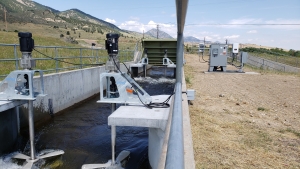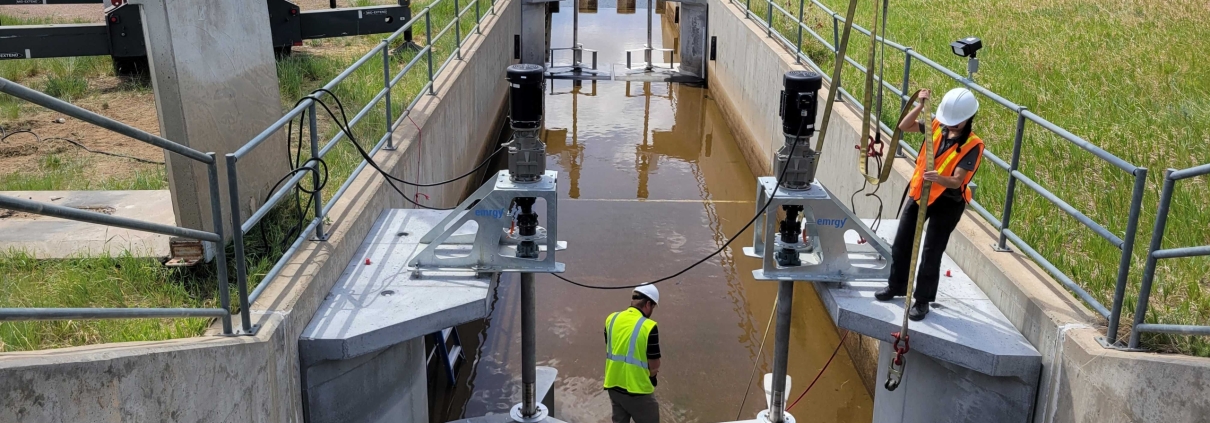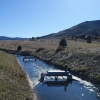The Hydropower Distribution: Why it Makes Sense?
Traditional hydropower projects have been large, centralized, and expensive. They also take a long time and face substantial regulatory hurdles. In comparison, solar has developed a much more flexible, low-cost, and rapid deployment model in the renewable energy field. Emrgy has essentially looked at these two and asked, “why can’t hydropower be as flexible and capital efficient as solar?”
Moving to a distributed hydropower model is the answer to that question. Emrgy has developed a distributed hydropower system that can be rapidly deployed in existing water conveyance infrastructure to create distributed energy arrays utilizing vertical axis hydrokinetic turbines that harness the energy of moving water through low-impact and low-cost energy systems. This solution requires minimal to no construction or modifications to existing infrastructure, can be deployed within 90 days, and by leveraging existing power conversion and controls technology tied into existing distribution grids the same as solar. This offers a low-cost, reliable, and high-capacity renewable energy system that can be deployed ubiquitously wherever water is being transported in open channels.

Emrgy has taken the technical and deployment concepts of solar and applied them to hydropower, as well as the commercial and economic models. With Emrgy, we are able to tap into an unprecedented and largely untapped source of water conveyance infrastructure and turn it into competitive and profitable distributed energy projects worldwide, leveraging the PPA (Power Purchase Agreement) foundation, financing, and licensing that solar has built over the last 15-20 years. As we continue to grow and scale our operations at Emrgy we look to expand our deployments and development across the globe as well as lean into more new technologies focused on creating clean renewable energy from moving water.
Emrgy seeks to bring hydropower from transmission down to distribution scale enabling more rapid deployment and flexibility in the transitional hydropower mix.



